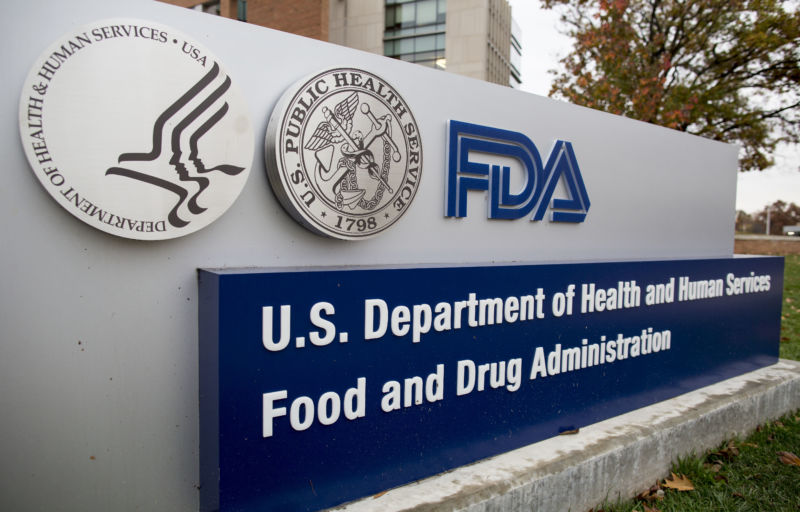Unanimous —
Moderna boosters are recommended for the same groups eligible for a Pfizer booster.
Beth Mole
–

Enlarge / The Food and Drug Administration headquarters in White Oak, Maryland.
As expected, a committee of independent advisors for the Food and Drug Administration voted unanimously (19-to-0) Thursday afternoon in favor of authorizing a booster dose of Moderna’s COVID-19 vaccine for certain groups.
The groups flagged for boosting are individuals aged 65 and older, people ages 18 to 64 who are at risk of severe COVID-19 due to health concerns, and those 18 to 64 who are at risk of COVID-19 due to frequent institutional or occupational exposures, such as health care and essential workers. These are the same groups that were previously authorized to get a Pfizer/BioNTech booster.
As with the Pfizer/BioNTech boosters, the Moderna boosters are to be given six months or longer after the first two doses of Moderna’s mRNA vaccine.
One notable difference in the Moderna recommendation, however, is that the booster will be half the dose of the first two—i.e., a 50-microgram dose rather than the 100-microgram doses used in the first and second shots.
In data submitted to the FDA in advance of today’s meeting, Moderna reported that boosting with the smaller dose was just as effective as the larger dose but was likely to result in fewer side effects. Specifically, the company said that both 50- and 100-microgram booster doses generated a 66-fold or larger increase in antibody levels among clinical trial participants.
The committee also saw data indicating that protection against mild- to moderate-COVID-19 infections wanes over time and that older and at-risk groups may become more vulnerable to severe disease as time goes on (though for now, protection against hospitalization and death is holding strong).
With that context, in combination with the good safety and efficacy data, the FDA committee—the Vaccines and Related Biological Products Advisory Committee (VRBPAC)—was resoundingly in favor of offering booster doses to the select groups.
Goals
As in the committee’s deliberations over the Pfizer/BioNTech booster, VRBPAC members were strongly opposed to opening up boosters to everyone—something the Biden administration has been keen to do. Members once again pointed to the steady protection against hospitalization and death among younger groups, who are also at relatively higher risk for certain complications, namely myocarditis (inflammation of the heart.)
“Certainly, I don’t agree with [offering boosters] down to 18 years of age at all,” said Paul Offit, a voting VRBPAC member and a pediatric infectious disease expert at the Children’s Hospital of Philadelphia.
“I’m impressed by the fact that we continue to have excellent protection against moderate to severe disease in this country through delta and for all age groups,” Offit said in a discussion after the vote. “And I just think that we continue to send wrong messages out there by using terms like ‘breakthrough’ and by making people feel that they’re not protected unless they’ve gotten a third dose.”
Vaccines are intended to avert the worst outcomes—severe disease and death—not prevent mild infections, he and others argued. Though the term “breakthrough infection” gives the impression of vaccine failure, mild infections are always expected at some level, Offit noted. “If the goal of this vaccine is to prevent asymptomatic or mildly symptomatic infection… that is a high bar to which we hold no other vaccine,” he said.
Further, that goal and the push to boost all vaccinated people is a distraction from the most important goal, Offit added. “The problem in this country is vaccinating the unvaccinated.”
For now, Moderna’s booster rollout will go only to people in the identified groups—and, in those groups, only people who received Moderna’s vaccine to begin with. Yesterday, researchers released preliminary trial data suggesting that mixing and matching vaccines offers equal protection to—and maybe better protection than—sticking with the same type of vaccine for a booster. Though the study was small, it provided hints that boosting with the Moderna vaccine may offer the strongest protection, regardless of the original vaccination. However, the trial was done at a shorter time interval after the first two doses (boosting after 12 weeks, not after six months), and it used the larger 100-microgram dosage for boosters.
VRBPAC is meeting again tomorrow to discuss the mix-and-match data as well as booster data for the Johnson & Johnson vaccine. Meanwhile, the FDA will decide whether to sign off on the VRBPAC’s recommendations today for Moderna booster authorization, which it is likely to do. Then, the Centers for Disease Control and Prevention and its committee of advisors will weigh in with further recommendations for who should get the boosters.

